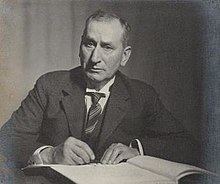Name Frederick Wensley | Died 1949 | |
 | ||
Books Forty Years of Scotland Yard: A Record of Lifetime\'s Service in the Criminal Investigation Department | ||
Frederick porter wensley top 13 facts
Frederick Porter Wensley OBE KPM (28 March 1865 – 4 December 1949) was a British police officer from 1888 until 1929, reaching the rank of chief constable of the Scotland Yard Criminal Investigation Department. Serving in Whitechapel for part of his career, Wensley was involved in the investigation of the Jack the Ripper murders, details of which he would later publish in his memoirs in 1931, focusing particularly on the murders of Frances Coles and Constable Ernest Thompson.
Contents

Wensley first gained public attention when he was responsible for capturing a burglar and murderer named William Seaman in a fight in Whitechapel in front of a crowd. Seaman had just murdered a pawnbroker named John Goodman Levy and his housekeeper, Mrs Sarah Gale (Seaman would later insist Levy was a fence of stolen goods). Unable to get out of the house on the ground floor, Seaman worked his way to the roof and was followed by Wensley. A fierce fight between the men occurred while a crowd collected. In the end Wensley managed to subdue Seaman. Seaman would later hang for the murder of Levy and Mrs Gale, placed between Milsom and Fowler the "Muswell Hill" murderers, to make sure that Fowler did not try to kill his partner as he had tried to do at their trial.
Wensley's actions in two of his cases have been questioned over the years. In the "Clapham Common" Mystery of 1911 the chief suspect, Steinie Morrison may have been observed unfairly by witnesses shepherded by Wensley. Wensley always continued to believe that Morrison killed the victim Leon Beron for his money (Beron carried a large sum on him at all times). The other controversial case was that of Edith Thompson and Frederick Bywaters, both executed in 1923 for the stabbing murder of Edith's husband Percy the previous year. This case was notable because Mrs Thompson appears never to have been linked to the murder committed by her lover, except for letters she wrote to Bywaters suggesting she was trying to poison Percy. Sir Bernard Spilsbury tested for poison, but found nothing. It is likely that Thompson was actually convicted (like Florence Maybrick over thirty years earlier) for committing adultery. Initially she claimed she did not know who attacked Percy. However, Bywaters had been caught already, and Wensley wanted to test his theory of a joint murder plot. While Thompson was crossing the floor after being questioned, she saw Bywaters being led across in a different direction. She apparently collapsed and said, "Oh, why did he do it?!"
Wensley also worked on the murder of Frenchwoman Emilienne Gerard, whose body was discovered on 2 November 1917. He interviewed Gerard's lover, Louis Voisin, and arrested him after discovering that he misspelt "bloody" in the same was as the murderer who had left "blodie Belgium" at the crime scene.
Published works
While Wensley's memoirs appear under the more common title of Forty Years of Scotland Yard, they were originally published in London under the title Detective Days and were only renamed upon subsequent publishing in New York City. In them, Wensley downplays his own role in the investigation of the Ripper murders:
Not that I had much to do with it. In common with hundreds of others I was drafted there, and we patrolled the streets usually in pairs-without any tangible result. We did, however, rather anticipate a great commercial invention. To our clumsy regulation boots we nailed strips of rubber, usually bits of old bicycle tires, and so ensured some measure of silence when walking.
Wensley also agrees with commonly held theories that the police were never sure of their suspects:
Officially, only five (with a possible sixth) murders were attributed to Jack the Ripper.
